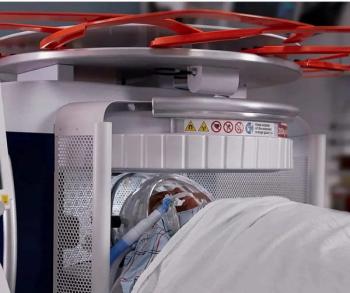A large meta-analysis involving over 100 studies and over 25,000 patients revealed robust sensitivity rates for PI-RADS category 3 and higher assessments with the PI-RADS v2.1 system for interpreting prostate magnetic resonance imaging (MRI). However, the meta-analysis authors cautioned that 34 of the reviewed studies had a high risk of bias or concerns about applicability.
For the meta-analysis, recently published in the American Journal of Roentgenology, researchers reviewed data from 117 studies and 25,228 patients with a total of 15,553 prostate lesions in order to assess the utility of the PI-RADS v2.1 system.
The researchers found that PI-RADS category > 3 assessments with the PI-RADS v2.1 system had patient-level sensitivity and specificity of 96 percent and 43 percent, respectively, for the detection of clinically significant prostate cancer (csPCa). For patients with PI-RADS category > 4 evaluations, the PI-RADS v2.1 system offered respective patient-level sensitivity and specificity of 88 percent and 66 percent for csPCa, according to the meta-analysis authors.
The meta-analysis findings also revealed cancer detection rates (CDRs) of 83 percent for PI-RADS category 5, 53 percent for PI-RADS category 4, 20 percent for PI-RADS category 3, 6 percent for PI-RADS category 2 and 3 percent for PI-RADS category 1.
“The present data confirm the available evidence regarding the (PI-RADS v2.1) system’s high sensitivity and low CDRs of low PI-RADS categories,” wrote meta-analysis lead author Andrea Nedelcu, M.D., who is affiliated with the Department of Radiology at the University of Freiburg Medical Center in Freiburg, Germany, and colleagues.
Employing the QUADRAS-2 tool for assessing the quality of the reviewed studies, the meta-analysis authors found that 34 of the studies had a high risk of bias or questionable applicability.
Three Key Takeaways
- High sensitivity for csPCa detection. The PI-RADS v2.1 system demonstrated strong patient-level sensitivity (up to 96%) for identifying clinically significant prostate cancer, particularly in PI-RADS category ≥3 assessments.
- Strong correlation between PI-RADS category and cancer risk. Cancer detection rates rose progressively with higher PI-RADS categories —ranging from 3 percent in PI-RADS 1 to 83 percent in PI-RADS 5 — supporting the system’s effectiveness in stratifying malignancy risk.
- Quality of evidence impacts accuracy. Nearly one-third of included studies had a high risk of bias or concerns about applicability, underscoring the need for consistent, high-quality study designs in future PI-RADS v2.1 evaluations.
For studies deemed to have a high risk of bias, the researchers noted 11 percent lower lesion-level sensitivity in PI-RADS category > 4 assessments (78 percent vs. 89 percent) as well as an 11 percent higher CDR for PI-RADS category > 2 evaluations (15 percent vs. 4 percent) in contrast to studies without a high bias risk.
“ … A considerable proportion (29%) of studies had a high risk of bias and/or high concerns of applicability. These high-risk studies were associated with significantly reduced sensitivity and significantly increased CDR for PI-RADS category 2 in certain estimates, suggesting potentially flawed estimates resulting from inclusion of investigations with quality issues,” noted Nedelcu and colleagues.
(Editor’s note: For related content, see “Is PI-RADS Version 2.1 Outdated for Prostate MRI?,” “MRI-Based Deep Learning Model Bolsters Prediction of PI-RADS 3 and 4 Lesions” and “Study: Monitoring of Prostate MRI Exams Could Lead to 75 Percent Reduction of Gadolinium Contrast.”)
In regard to limitations of the meta-analysis, the authors acknowledged the lack of a uniform definition for csPCa in the reviewed studies, the lack of PI-RADS v2.1 assessment for those on active surveillance for known PCa and the exclusion of non-English language studies from the meta-analysis.





























